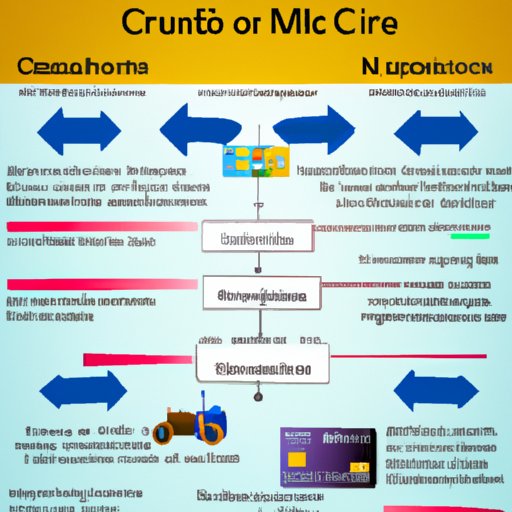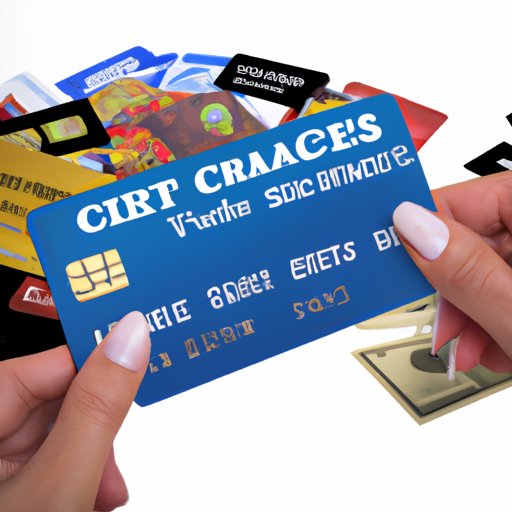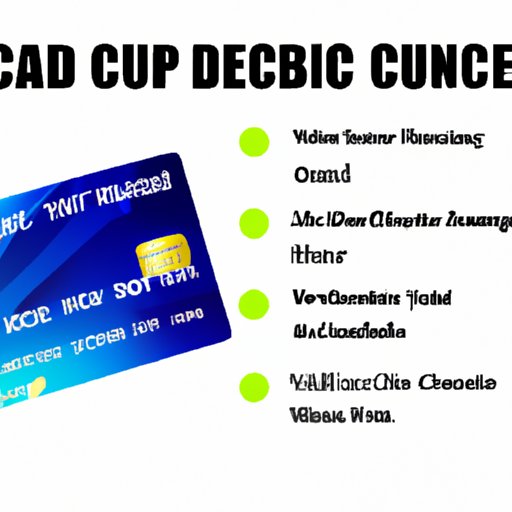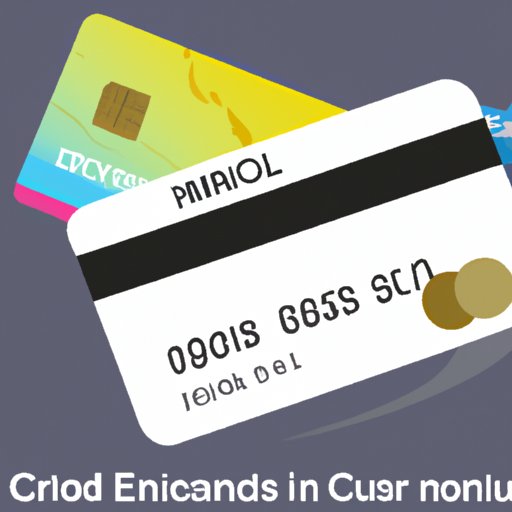Introduction
Credit cards are an essential part of modern life, allowing us to make purchases quickly and conveniently. But how exactly do they work? In this article, we’ll explore the basics of credit cards, including how they work, their benefits and risks, and strategies for successful credit card use.
Definition of Credit Cards
A credit card is a type of payment card that allows you to borrow money from a bank or other financial institution in order to make purchases. When you use a credit card, the bank pays the merchant on your behalf and you pay back the bank over time, with interest. Credit cards are an important tool for managing finances, but it’s important to understand how they work before using them.

Overview of How Credit Cards Work
When you apply for a credit card, the issuing bank will review your credit score and other financial information to determine if you’re eligible for the card and what your credit limit should be. Once approved, you’ll receive a physical card with a magnetic strip or chip that stores your account information. You can then use the card to make purchases at any store or online merchant that accepts credit cards.
When you make a purchase, the merchant will send an authorization request to the bank. The bank will check to make sure there are sufficient funds in your account to cover the purchase and then approve or decline the transaction. If approved, the money will be taken from your credit card account and sent to the merchant.
At the end of the month, you’ll receive a statement from the bank detailing all of your transactions for the month. You’ll need to pay off the amount due by the due date in order to avoid late fees and interest charges. If you don’t pay the full balance, you’ll be charged interest on the remaining balance.

Exploring the Benefits and Risks of Credit Cards
Credit cards offer a number of advantages, but it’s important to understand their potential drawbacks as well. Let’s take a look at the benefits and risks of credit cards.
Benefits
Credit cards offer a number of benefits, including convenience, rewards programs, and emergency funds. Here’s a closer look at each of these benefits:
Convenience
Credit cards are convenient because you can use them anywhere that accepts credit cards, making it easy to make purchases without having to carry cash. They also give you the flexibility to pay for purchases over time, rather than having to pay the full amount up front.
Rewards Programs
Many credit cards offer rewards programs, which allow you to earn points or cash back on purchases. These rewards can be used to offset future purchases or redeem gift cards or other items.
Emergency Funds
In times of financial hardship, credit cards can provide a lifeline by allowing you to make purchases when you don’t have the cash on hand. This can be especially useful in emergencies, such as medical bills or car repairs.
Risks
While credit cards can be a useful financial tool, there are some risks associated with using them. These include high interest rates, fraudulent charges, and overspending.
High Interest Rates
If you don’t pay off your balance in full each month, you’ll be charged interest on the remaining balance. Credit card interest rates are typically much higher than other forms of borrowing, so it’s important to pay off your balance as quickly as possible in order to avoid paying too much in interest.
Fraudulent Charges
Unfortunately, credit cards are vulnerable to fraud and identity theft. To protect yourself, it’s important to monitor your accounts regularly and report any suspicious activity to your bank immediately.
Overspending
It’s easy to become overwhelmed by credit card debt if you’re not careful. To avoid this, it’s important to stick to a budget and only use your credit card for necessary purchases.
A Step-by-Step Guide to Using Credit Cards
Now that you understand the basics of how credit cards work, let’s take a look at the steps involved in using them. Here’s a step-by-step guide to using credit cards:
Applying for a Credit Card
The first step in using a credit card is to apply for one. You’ll need to provide personal information, such as your name, address, and Social Security number. You’ll also need to provide financial information, such as your income and employment history. The bank will then review your application and decide whether or not to approve it.
Activating a Credit Card
Once you’ve been approved for a credit card, you’ll need to activate it. This is usually done by calling the bank or signing into your online account. You’ll need to provide some personal information in order to activate the card.
Making Purchases
Once your card is activated, you’re ready to start making purchases. All you need to do is present your card to the merchant, who will then process the transaction. You’ll need to sign a receipt or enter your PIN in order to complete the transaction.
Paying Your Credit Card Bill
At the end of the month, you’ll receive a statement from the bank detailing all of your transactions for the month. You’ll need to pay off the amount due by the due date in order to avoid late fees and interest charges. It’s important to pay off your balance in full each month in order to avoid paying interest.
Understanding Credit Card Interest Rates and Fees
Credit cards come with a variety of interest rates and fees. It’s important to understand these before using a credit card. Here’s a closer look at credit card interest rates and fees.
Definition of Interest Rates
Credit card interest rates are the fees you’re charged for borrowing money from the bank. The interest rate is usually expressed as an annual percentage rate (APR) and can vary depending on the type of card you have and your creditworthiness.
Types of Credit Card Fees
In addition to interest rates, credit cards also come with a variety of other fees. Common fees include annual fees, late payment fees, balance transfer fees, and cash advance fees. Some cards may also have foreign transaction fees or other miscellaneous fees.

Strategies for Managing Credit Card Debt
If you find yourself struggling with credit card debt, there are a few strategies you can use to help get your finances back on track. Here are a few tips for managing credit card debt:
Avoiding Late Fees
Late fees can add up quickly, so it’s important to pay your balance in full each month before the due date. You can set up automatic payments to ensure that your payment is made on time.
Setting Up Automatic Payments
Automatic payments are a great way to stay on top of your payments. You can set up automatic payments to be deducted from your checking or savings account each month, ensuring that you never miss a payment.
Consolidating Debt
If you have multiple credit cards with high balances, you may want to consider consolidating your debt. Debt consolidation allows you to combine multiple debts into one loan with a lower interest rate, making it easier to manage your payments.
Tips for Choosing the Right Credit Card
Not all credit cards are created equal. It’s important to choose the right card for your needs. Here are a few tips for choosing the right credit card:
Analyzing Your Spending Habits
Take a look at your spending habits to determine which type of credit card is best for you. For example, if you travel often, you might want to look for a card with no foreign transaction fees. Or if you’re looking to earn rewards, you might want to look for a card with a generous rewards program.
Comparing Credit Card Offers
Once you know what type of card you’re looking for, compare different offers to find the best deal. Look at factors such as interest rates, annual fees, and rewards programs to find the card that best meets your needs.
Reading the Fine Print
Before applying for a credit card, it’s important to read the fine print. Pay special attention to the terms and conditions, as these can vary significantly from card to card. Make sure you understand the fees and interest rates associated with the card before you apply.
Conclusion
Credit cards can be a useful financial tool, but it’s important to understand how they work and the risks associated with them. By taking the time to learn about credit cards and choosing the right card for your needs, you can use credit cards responsibly and reap the benefits they offer.
(Note: Is this article not meeting your expectations? Do you have knowledge or insights to share? Unlock new opportunities and expand your reach by joining our authors team. Click Registration to join us and share your expertise with our readers.)
